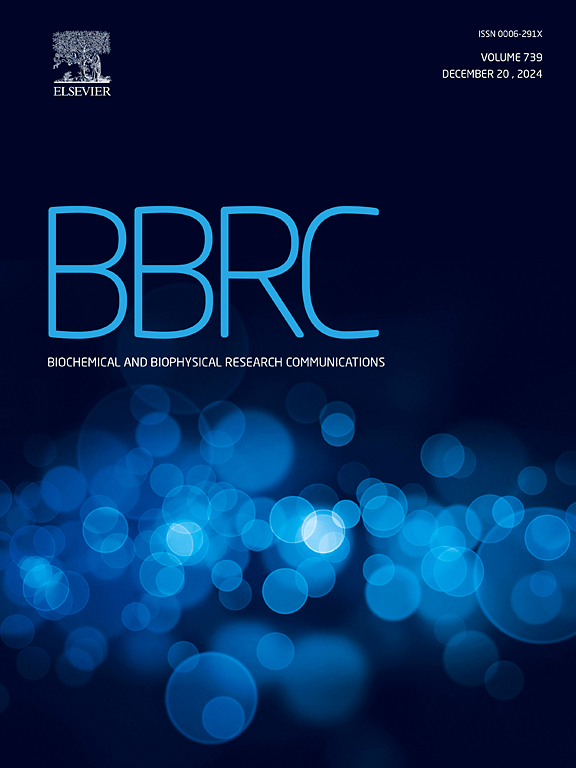Mechanical stimulation induces electrical coupling via TNTs through calcium-dependent mechanisms in C2C12 cells
IF 2.2
3区 生物学
Q3 BIOCHEMISTRY & MOLECULAR BIOLOGY
Biochemical and biophysical research communications
Pub Date : 2025-06-14
DOI:10.1016/j.bbrc.2025.152186
引用次数: 0
Abstract
Intercellular communication and cellular material exchange are essential for the development, tissue repair, and survival of multicellular organisms. Tunneling nanotubes (TNTs) serve as long-distance intercellular connections that facilitate the transmission of biochemical and electrical signals between cells. However, the mechanisms underlying this process remain largely unknown. This study uses mechanical stimulation to explore the transmission and mechanisms of mechano-electrical signals mediated by TNTs. We assessed both gap junction (GJ)-mediated and TNT-mediated intercellular electrical coupling in HEK cells, A549 cells, and C2C12 cells. Our results show that the coupling ratio was lower in HEK cells compared to A549 cells, with the highest ratio observed in C2C12 cells. Additionally, the strength of TNT-mediated electrical coupling decreased as TNT length increased. Using C2C12 cells as a model, we found that Ca2+ influx and the gap junction protein Connexin 43 (Cx43) play roles in TNT-mediated electrical coupling induced by mechanical stimulation. Mechanical stimulation triggers extracellular Ca2+ entry into C2C12 cells via mechanosensitive and T-type calcium channels. Our experiments also demonstrate that TNT-mediated electrical coupling between C2C12 cells is predominantly unidirectional. These findings provide new insights into the mechanisms of intercellular electrical signal transmission.
在C2C12细胞中,机械刺激通过钙依赖机制通过tnt诱导电偶联
细胞间通讯和细胞物质交换对多细胞生物的发育、组织修复和生存至关重要。隧道纳米管(TNTs)作为细胞间的长距离连接,促进了细胞间生化和电信号的传递。然而,这一过程背后的机制在很大程度上仍然未知。本研究采用机械刺激的方法,探讨tnt介导的机电信号传递及其机制。我们评估了HEK细胞、A549细胞和C2C12细胞中间隙连接(GJ)介导和tnt介导的细胞间电偶联。我们的研究结果表明,HEK细胞的偶联率低于A549细胞,其中C2C12细胞的偶联率最高。此外,随着TNT长度的增加,TNT介导的电偶联强度降低。以C2C12细胞为模型,我们发现Ca2+内流和间隙连接蛋白Connexin 43 (Cx43)在机械刺激诱导的tnt介导的电偶联中发挥作用。机械刺激触发细胞外Ca2+通过机械敏感和t型钙通道进入C2C12细胞。我们的实验还表明,tnt介导的C2C12细胞之间的电偶联主要是单向的。这些发现为研究细胞间电信号传递的机制提供了新的见解。
本文章由计算机程序翻译,如有差异,请以英文原文为准。
求助全文
约1分钟内获得全文
求助全文
来源期刊
CiteScore
6.10
自引率
0.00%
发文量
1400
审稿时长
14 days
期刊介绍:
Biochemical and Biophysical Research Communications is the premier international journal devoted to the very rapid dissemination of timely and significant experimental results in diverse fields of biological research. The development of the "Breakthroughs and Views" section brings the minireview format to the journal, and issues often contain collections of special interest manuscripts. BBRC is published weekly (52 issues/year).Research Areas now include: Biochemistry; biophysics; cell biology; developmental biology; immunology
; molecular biology; neurobiology; plant biology and proteomics

 求助内容:
求助内容: 应助结果提醒方式:
应助结果提醒方式:


